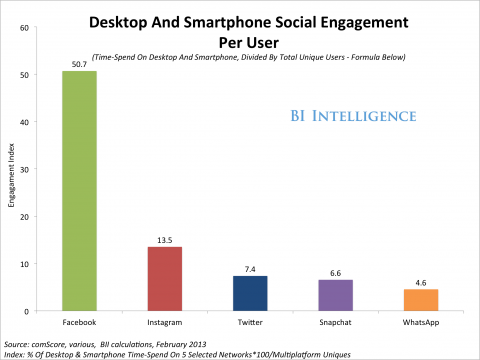Online check in, Online Banking, Online Games, Online shopping. This word ‘Online’ has been providing people the opportunity to be in touch with their friends, pay their bills, and order some pizza without leaving their house. We’re now getting used to this new way of living and shopping. Therefore, brick and mortar stores, those in which we used to spend hours in are probably in danger. This post is going to provide the readers with the information on what is happening and why, and how that is influencing our life.
Internet and Online Shopping
Internet along with Online Shopping are two topics that penetrated people’s life and are far from becoming outdated. Internet has one extremely important advantage that enables businesses to reach a worldwide costumer population, so that customers can survey, select, and purchase products and services from businesses around the world (Al Kailani & Kumar, 2011). Beside it, this year marks the 20th anniversary of what is worldwide known as the first ‘secure online purchase’, and since then Online Shopping has been attracting more consumers having now nearly 1 in 4 people going online each week to shop (The Telegraph, 2014). The image below show the percentage in several countries.
 Figure 1 – Consumer Barometer, Google 2014)
Figure 1 – Consumer Barometer, Google 2014)
Are we being driven to Online Shopping?
People are now short on time, short on money, and want to be sure of the quality of the products they are buying. Vellido et al. (1999) investigated consumers’ opinion on online purchasing and online vendors that seem to consist of the underlying dimensions ‘control and convenience, ‘trust and security’, ‘affordability’, ‘ease of use’, and ‘effort/responsiveness’. For the last 20 years, Online Shopping has been an extremely commented topic within the media. People, newspapers and blogs express their opinion on how bad it has been affecting the society and how it will close down many brick and mortar stores (The Telegraph, 2014), (The Week, 2012). However, it seems like companies are pushing people to make online purchases. Companies are now, investing fortunes on TV adverts in order to attract consumers and transmit the idea that exclusive items could only be found online. The videos presented below, will provide the readers a view of how this is happening.
‘Showrooming’? Why?
Costumers use multiple channels when gathering information about the product, sometimes where to acquire it, although the same consumers purchase their wished item from a competing channel, titled ‘Showrooming‘ by the media (DeStasio, 2012; Darlington, 2012). Consumers visit a brick and mortar store, which is in charge of paying heating, lighting, maintenance costs, security along with many other costs including salaries. During this process the consumer spends time in store, searching for his product and asking information often from young professionals, who also have to be trained (The Telegraph, 2013), ending up buying the same product online. Due to this, Showrooming has been described as a significant issue for companies that primarily have relied on retail distribution channels in marketing their products (Darlington, 2012). In spite of being criticized ‘showrooming’ is happening due to reasonable reasons. The graphic below presents the reasons for showrooming.
Figure 2- Showrooming and the Rise of the Mobile Assisted Shopper, Columbia Business School, 2013)
 Figure 3 – http://www.baldwin.be/showrooming-en-hoe-overwinnen/
Figure 3 – http://www.baldwin.be/showrooming-en-hoe-overwinnen/
 Figure 4- Showrooming and the Rise of the Mobile Assisted Shopper, Columbia Business School, 2013)
Figure 4- Showrooming and the Rise of the Mobile Assisted Shopper, Columbia Business School, 2013)
Are M-Shopper Influencing?
According to a report from Simon Kucher and Partners (2013), there are three engines that have empowered E-commerce for the last 20 years, low cost, technology, and bottom up experience. These three engines have been influencing online shopping and nowadays people already prefer to purchase online (Wall Street Journal, 2013). When it comes, to online shopping, there’s another revolution going on. Not only people prefer to buy online, but by using their smartphone. Better isn’t it? Humans are now joining and accepting this new way of buying on the way. There’s an article posted by Columbia Business School and AIMIA that shows that 6.1% of the people are ‘Exploiters’, these are the ones influenced by lower prices. There’s also an interesting group, called ‘Savvy’s’ (12.6%). These group, after the Exploiters, are the easiest to target with mobile experiences due to their open mind related to technology. These 2 groups are followed by the ‘Prince Sensitives’, ‘Traditionalists’, and ‘Experience Seekers’. These 3 last groups, do not use their mobile while purchasing, however are groups which expect good in store experience (Linked in, 2013).
Figure 5- Consumer Barometer, Google 2014)
Future
It’s a fact, online shopping has been rising its sales and is affecting how people shop. In my opinion, we are now becoming intelligent consumers, looking for convenient ways to get our products faster and cheaper. Brick and mortar stores need to take the in-store experience to a different level in order to attract and retain more consumers. As Jeremy Bogaisky Forbes Magazine said, ‘Retailers who understand their customers, leverage technology to evolve the costumer experience, and focus on their differentiators and assets have the opportunity to thrive’. However, I think online shopping will never be able to provide such a memorable experience as we find in a traditional store.







